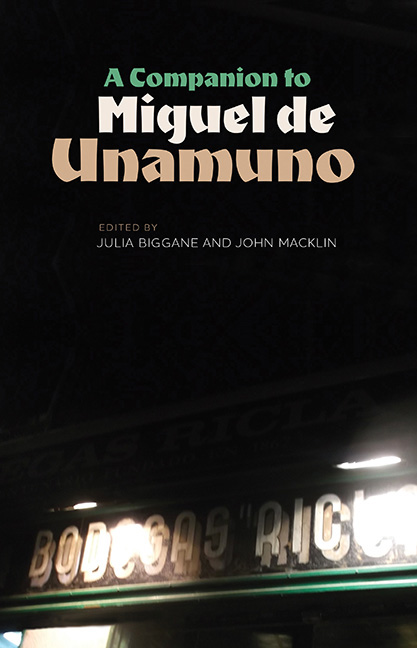11 - Landscapes of the Soul: Unamuno’s Travel Writing*
Published online by Cambridge University Press: 21 May 2021
Summary
The experience of travel in fin-de-siècle literature
The experience of travel in all its diverse forms – excursion or tour, adventure, day trip or walk – was a constant of nineteenth-century European literature. Spain did not escape scrutiny, though a glance at the bibliography shows that the major writers tended to be from the Anglo-or Francophone traditions: Borrow, Achard, Andersen, Ford, Irving, and Mérimée all focused their attention on Spanish customs, inhabitants and landscapes. Unamuno himself, and José Martínez Ruiz (‘Azorín’) championed the figures of Théophile Gautier and Alexandre Dumas, underlining their intimate sensitivity to the Spanish landscape and their ability to discover the ‘essence’ of the country. Azorín asserted that Gautier ‘helped the youth of 1898 see the landscape of Spain … in terms of poetic interpretation of the countryside. It is difficult to imagine that he will ever be surpassed, because the physical geography of the Peninsula is not just narrated in his work, but seen, with a rapt, disinterested and dazzling eye’ (Martínez Ruiz 1998: 997).
Spanish literature, in contrast, produced relatively little travel writing. Emilia Pardo Bazán, Ortega Munilla and Benito Pérez Galdós contributed to the genre in the second half of the nineteenth century, but the culminating text was Pedro Alarcón's 1874 work, La Alpujarra. Sesenta leguas a caballo, precedidas de seis en diligencia [The Alpujarras. Seventy Leagues on Horseback, Preceded by Six in a Stagecoach], which he would subsequently publish in his Viajes por España [Travels Through Spain]. The most important influence on the so-called Generation of 1898 as far as travel was concerned came later, and not from literature, but from the La Institución Libre de Enseñanza (ILE: the Independent Institute of Education). It was only with the Institute's appearance that the excursion as ideal means to discover and understand the physical terrain and landscape of the country began to be put into meaningful practice. Guided both by academic study and popularisation of the geographical sciences, Francisco Giner de los Ríos and his students were influential in spreading the practice of hiking and rambling as means of acquiring geographical and geological knowledge of the country: Giner undertook numerous excursions through central Castile, ‘the physical and emotional centre of what was identified as the national spirit’ (Pena 1982: 86).
- Type
- Chapter
- Information
- A Companion to Miguel de Unamuno , pp. 209 - 228Publisher: Boydell & BrewerPrint publication year: 2016
- 1
- Cited by



